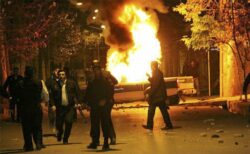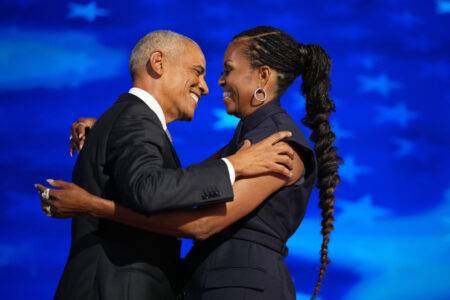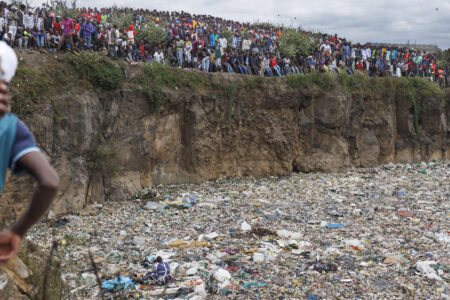Donald Trump’s recent tweets on Iran are very revealing and expose the ignorance of the President of the United States when it comes to understanding what has motivated the Iranian people to leave their homes and protest across the country.
Trump is convinced the rallies and demonstrations have everything to do with foreign policy and regime change but the truth is the unrest has more to do with the price of bread or the cost of other dietary basics such a poultry and eggs. Unemployment and access to services are also causing widespread concern.
Unlike the political protests of 2009 over the re-election of President Mahmoud Ahmadinejad, this isn’t the vocally loud intellectual elite from the northern suburbs of Tehran rising up demanding reform and change. The week-long protest has involved huge swathes of the working classes who simply want their day-to-day living standards improved.
Following the nuclear deal with the West brokered during the Obama Administration, expectations were high in Iran that the standard of living would improve with the lifting of sanctions. However that prospect has diminished as the Trump administration continues to toughen its position on Iran.
I’ve traveled extensively across Iran over the years from Masshad in the East to Abadan in the West and Tehran and Esfahan in between. The people from those regions and cities are diverse and come from all sorts of backgrounds from the religiously conservative to the intellectual elite as well as the industrial and working classes.
Watching the protests over the last few days, it is clear to me that as much as Trump, Israel and Saudi want regime change it is simply not going to happen. The Iranian Revolution of 1979 might have been born on the streets but the people came out against the brutal Shah regime with one voice in an organised and cohesive way.
The so-called Green movement, while vocal and able to manipulate the English-speaking western media, was never in any danger of doing the same as the original revolutionaries of ’79.
Today’s street protests are, in many ways, more complex, certainly on a larger scale but less focused and organised than the 2009 protests. There are no natural leaders emerging or clear demands and objectives which doesn’t mean to say the rallies will achieve nothing. However I think it’s fair to say very few working class Iranians or the religious conservatives want Trump to interfere or meddle in their country’s affairs.
So the more that Trump sends out his ill-informed tweets the more he will deter more Iranians from taking to the streets to air their domestic grievances. In some ways Trump’s recklessness and ignorance will help Iran’s hardliners facilitate a brutal crackdown against the people and he will ultimately undermine the protests and rallies.
While Trump has little regard for data or on-the-ground intelligence, facts are important and while geographically the protests are widespread it’s hard to gauge just how many of the nation’s 80 million citizens are actually taking part in the unrest.
What is a certainty is this is not a case of theocracy versus democracy no matter how many groups both inside and out of Iran wish it was. I believe the majority of those who are rising up have never really had a voice and nor are they about to get one now. But it is clear they are unhappy with their standards of living and blame corruption, military ventures in the Arab lands of Iraq, Lebanon, Syria and Yemen for diverting money while the high expectation of good times after the nuclear deal have failed to materialise.
It is inevitable the Tehran regime will blame foreign interference but it is also clear Trump has little or no influence with the Iranian people. The street chants are the same as 2009 with cries of “Bullets, tanks, and Basijis are no longer effective,” “referendum, referendum, this is the people’s slogan,” and “death to the dictator” but this is probably down to lack of imagination more than anything else.
Yes, the people do have a grievance and President Hassan Rouhani was right to call on the regime to provide the protesters with a platform enabling them to give voice to their concerns. He knows that the problems at the heart of Iran’s economy are more to do with internal transparency and corruption.
And the irony is that this sort of transparency and corruption can only thrive in times of economic hardship, the sort which Iran and ordinary Iranians have had to endure under harsh sanctions for decades because of attempts to completely isolate Iran from the rest of the trading world.,
During this bleak period financially the country has survived on a “resistance economy” that prevented its domestic industries from being targeted by overseas competition. Local markets thrived in place of trade with the West and international banks did not impact on the Iranian economy because of sanctions. As a result, when the global recession brought austerity across Europe and North America, Iran was able to endure the impact better than most.
However, there’s only so much bread and gruel even the most died-in-the-wool patriot can stomach and unless an economic recovery is presented on the horizon soon the demonstrations will continue to create unrest and civil disobedience. How far the regime is prepared to enforce a crackdown remains to be seen.
But in the meantime it would be helpful if the White House aides remove that cell phone from the US President who is making life more difficult for the protesters while scoring own goals for the US.
[simple-payment id=”11749″]






